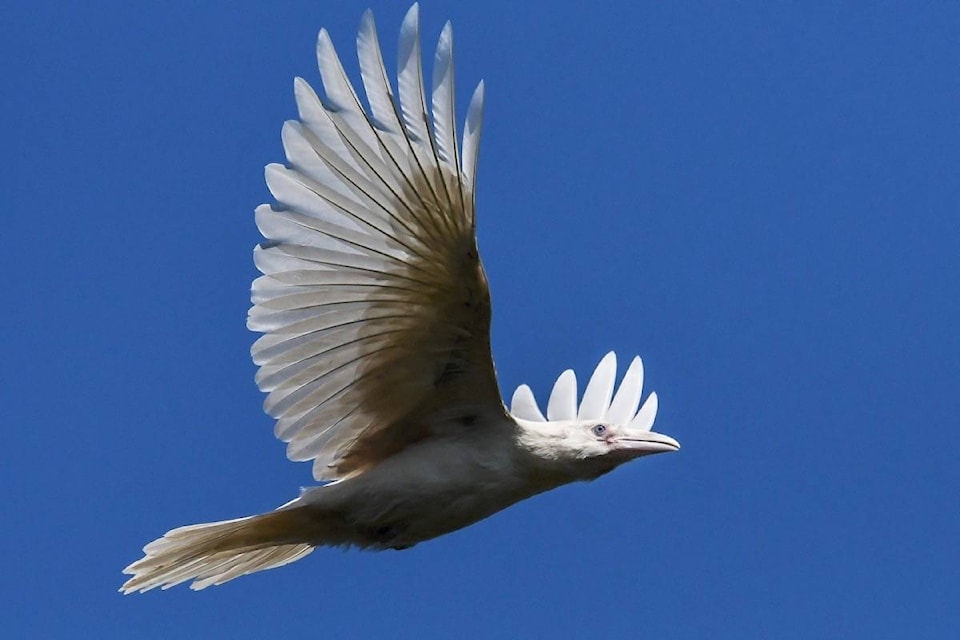Residents in the Parksville Qualicum Beach area have another chance to see the mysterious white raven.
For two decades, white ravens have periodically appeared in the Coombs-Hilliers region, and this year two new ones have appeared to continue the tradition, according to local nature photographer and author Mike Yip.
Yip, who spotted his first white raven in 2007, said the birds are born in the area and any he’s observed have been newborns.
The ravens are all white except for blue eyes, which classifies them as leucistic as opposed to albinistic.
RELATED: COLUMN: New white raven appears in Coombs
“The parents are black and they typically produce one or two white and usually two or three blacks at the same time,” Yip said.
With the regular birth of one or two white ravens a year, Yip said it could be expected to see many in the region, but that’s not the case.
“My theory is they don’t survive, otherwise we’d have a lot of them around,” Yip said. “The fact is, basically after December no one sees them until the new ones are born, so my theory is that either they disperse, but if they dispersed they would be reported elsewhere, or they never survive which is why we never hear about them when they should be adults.”
Yip believes their white feathers aren’t as durable and warm as black feathers and their eyesight is weaker.
“The [black] feathers have melanin in them and that gives the feathers strength and warmth and so with the absence of melanin the feathers definitely aren’t as durable,” Yip said.
White ravens are produced by a pair of black common ravens that both possess recessive gene alleles.
“There’s some years when I don’t see [white ravens] but mind you I’m not looking for them. There’s still a possibility that there are one or two born every year but it’s also possible that they miss a few years because it’s a genetic defect and if both (parents) get the recessive gene they end up with white [babies] but there could be years where no one gets the recessive genes so they’re all black,” Yip said.
